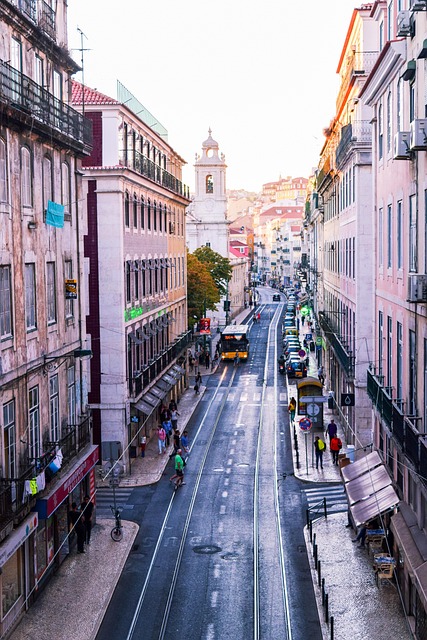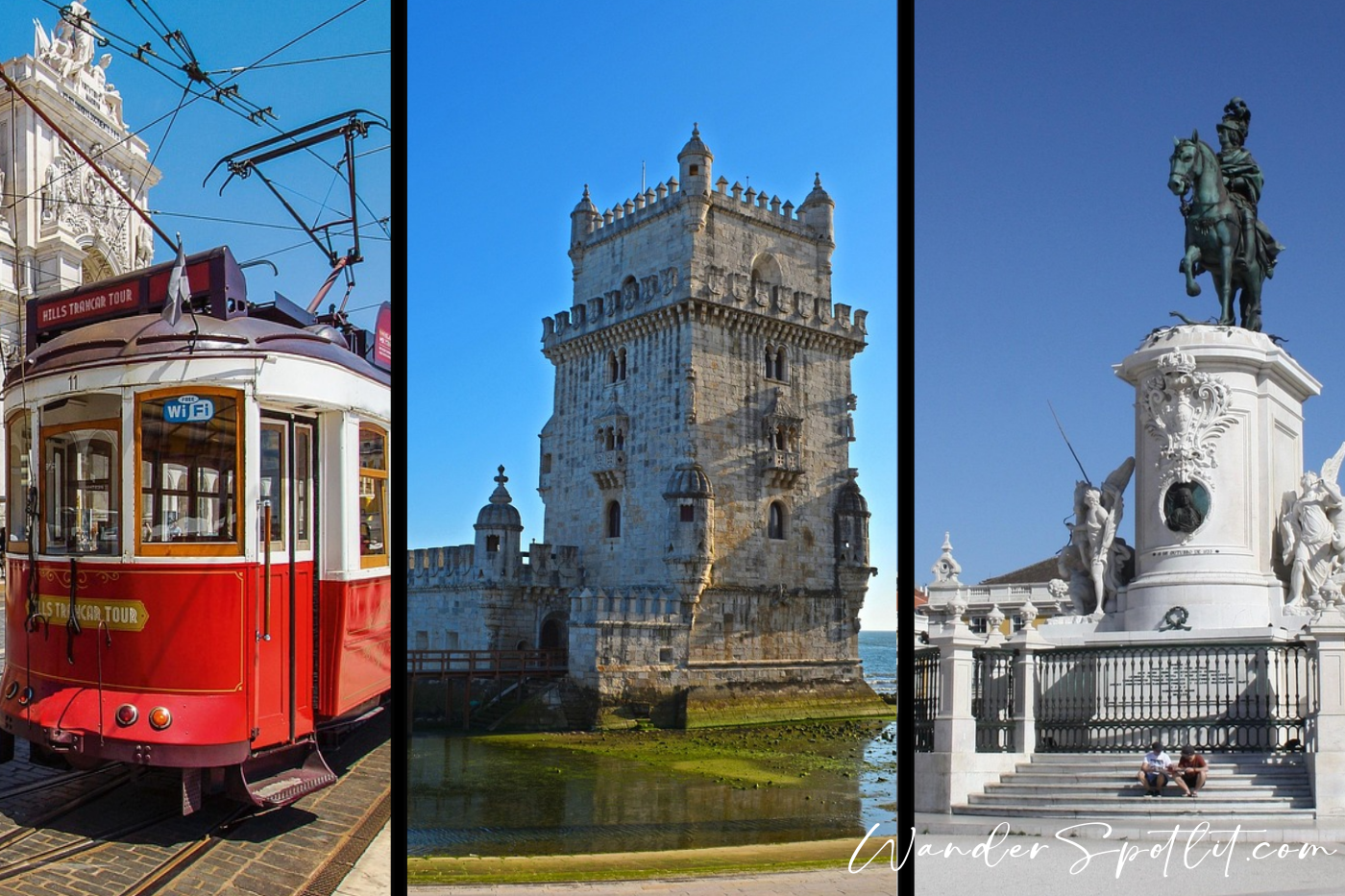Lisbon doesn’t simply reveal itself; it unfolds, layer by sun-drenched layer, a palimpsest of maritime glory, melancholic melodies, and anarchic azulejo-clad beauty. Perched on seven hills where the Tagus River kisses the Atlantic, this is a city of light and longing, where every cobblestone has a story and every miradouro offers a panoramic sonnet. For the first-time visitor, the sheer volume of things to do in Lisbon can feel overwhelming, a delightful dilemma of choosing between historic monuments and hidden tavernas. This guide is your curated map to the soul of the city, designed to lead you to the absolute best places to visit in Lisbon, ensuring your inaugural journey is nothing short of magical.
From the moment you hear the mournful strain of a Fado guitar drifting from an alleyway to the first taste of a decadent pastél de nata, you’ll understand why Lisbon captivates hearts. We will navigate the must-see places in Lisbon, from the grandeur of Belém to the tangled, washing-line-strung streets of Alfama. We’ll discuss the best time to visit Lisbon for ideal weather and fewer crowds, and pinpoint the best places to go in Lisbon for every type of traveler. Prepare to fall in love with a city that masterfully dances between profound history and vibrant, contemporary cool.
Table of Contents
A Morning Alfacinha: Getting Deliberately Lost in Alfama’s Labyrinth

To become a true alfacinha (little lettuce, the charming local nickname for Lisboetas) is to embrace the art of getting lost. Nowhere is this more essential than in Alfama, the ancient Moorish quarter that survived the great earthquake of 1755. This isn’t a district to be checked off a list; it’s a sensory experience. It’s the smell of sardines grilling on a makeshift barbecue, the sound of an old radio playing from a window box overflowing with geraniums, the feel of cool, shadowed air in a stairway that leads to a sun-drenched square with a breathtaking view of the city’s terracotta roofs.
The magic of Alfama lies not in a single attraction but in its immersive, almost viscous, atmosphere. It’s a living museum where history isn’t behind glass but is hanging out on the stoop. Allow yourself to be guided by curiosity, not a map. Follow a narrow beco (alleyway) that seems to lead nowhere, only to discover a tiny chapel or a local tasca (tavern) serving glasses of ginginha (sour cherry liqueur). This aimless wandering is one of the most authentic things to do in Lisbon, a personal pilgrimage into the city’s resilient heart.
The Soul-Stirring Echoes of Fado in a Mouraria Tasca
Fado, which translates to “fate,” is more than music; it’s the audible soul of Portugal, a raw, emotional expression of saudade—a deep, indescribable longing for something lost. While Alfama is famous for its Fado houses, the neighboring district of Mouraria, the true birthplace of the genre, offers a more intimate and unvarnished experience. Here, in a small, family-run tasca, surrounded by locals, you will experience Fado in its purest form. The lights dim, the chatter ceases, and a hush falls as the fadista begins to sing, their voice a vessel of centuries of sorrow, joy, and resilience.
This isn’t a performance for tourists; it’s a shared emotional catharsis. The guitarist’s fingers dance over the strings of the Portuguese guitarra, its distinctive timbre setting the stage for a voice that seems to emanate from the very stones of the city. You don’t need to understand the lyrics to feel their weight. It’s a profound, haunting, and unforgettable experience that connects you to the deepest emotional undercurrents of Lisbon. For a genuine cultural immersion, this is one of the essential must-see places in Lisbon for understanding its people.
A Voyage of Discovery at the Jerónimos Monastery
Standing before the Jerónimos Monastery in Belém is to witness the zenith of Portugal’s Age of Discoveries, a monument so grand it was funded entirely by a tax on spices from Africa and the East. This is Manueline architecture at its most triumphant, a style that transforms stone into intricate lacework, weaving maritime symbols—ropes, armillary spheres, sea monsters—into the very fabric of the building. To step inside its hallowed cloisters is to be transported to an era of unprecedented ambition and global exploration, a testament to the wealth and piety that defined 16th-century Portugal.
The sheer scale and detail are breathtaking. Every column, every arch, every capital is a masterpiece of sculptural storytelling, celebrating the voyages of Vasco da Gama and other navigators who charted the unknown. The light filters through the ornate windows, casting ever-changing shadows that dance across the limestone, making the entire structure feel alive. It’s a place that inspires awe and wonder, a humbling reminder of human artistry and ambition. It is, without question, one of the best places to visit in Lisbon for its historical significance and staggering beauty. Entry fees apply. Check official hours and prices here.
A Sunset Soirée at the Majestic Castelo de São Jorge

Perched atop the city’s highest hill, the São Jorge Castle is Lisbon’s silent sentinel, its foundations laid by the Moors and its walls witness to nearly a millennium of history. While its ramparts and archaeological site are fascinating by day, the castle transforms into something truly magical as the sun begins its descent. This is the golden hour pilgrimage, a daily ritual for romantics and photographers alike. Finding a spot along the ancient battlements, you watch as the city below is bathed in a warm, honeyed light, the red roofs glowing and the river turning to liquid gold.
As dusk deepens into night, the city lights begin to twinkle like a carpet of stars laid out at your feet. The sounds of the bustling metropolis fade into a distant hum, replaced by the gentle strum of a busker’s guitar and the soft murmur of fellow admirers. It’s a moment of profound peace and breathtaking beauty, a panoramic vista that etches itself into your memory forever. This sunset experience is one of the quintessential things to do in Lisbon, a perfect, romantic culmination to any day. Entry fees apply. Book tickets in advance here.
A Culinary Peregrination Through the Timeworn Baixa
After the 1755 earthquake, the downtown Baixa district was rebuilt on a grid of elegant streets, and today it pulses with commercial energy and culinary delights. To walk through Baixa is to embark a gustatory adventure. Begin at the monumental Praça do Comércio and dive into the grid, where the scent of freshly baked goods leads you to a pastelaria. Here, you must partake in the sacred ritual of tasting your first pastél de nata. The crisp, flaky pastry giving way to a warm, creamy, cinnamon-dusted custard is a rite of passage, a sweet symphony that defines Portuguese patisserie.
But the journey doesn’t end there. Follow the locals to a classic tasca for a bifana (a succulent marinated pork sandwich) washed down with a cold imperial (a draft beer). Peek into the Time Out Market, a gastro-hall that curates the best of the city’s chefs and artisans under one roof. From salty pata negra ham to briny oysters, each bite tells a story of Portugal’s relationship with the land and sea. This culinary peregrination is undoubtedly one of the most delicious best places to go in Lisbon for any food-loving traveler.
A Ride on a Rumbling Relic: The Iconic Tram 28
The bright yellow Tram 28 is more than mere transportation; it is a moving, rattling, bell-clanging national monument. Its route is a veritable tour of the city’s most historic must-see places in Lisbon, a rollercoaster ride through narrow, steep streets that seem barely wide enough for the tram itself. From the basilica-lined streets of Graça, through the labyrinth of Alfama, past the shopping haven of Baixa, and up to the chic boutiques of Estrela, this journey offers a moving snapshot of the city’s diverse character, all for the price of a single ticket.
The experience is a charming anachronism. You’ll hold on tight as the tram lurches and groans up impossibly steep inclines, the bell dinging to scatter pedestrians. You’ll share space with locals returning from the market with their grocery trolleys and fellow travelers clutching their cameras in awe. Glimpses of daily life flash past your window: a woman hanging laundry, kids playing football in a square, an old man reading a paper on his balcony. It’s a functional piece of history and one of the most charming things to do in Lisbon. Be mindful of pickpockets on the crowded tram.
An Ode to Exploration at Belém’s Padrão dos Descobrimentos
Jutting out boldly into the Tagus River, the Padrão dos Descobrimentos (Monument to the Discoveries) is a monumental ode to Portugal’s intrepid navigators. Shaped like a caravel ship’s prow, it features over 30 statues of key figures from the Age of Discovery, led by Henry the Navigator. While impressive from the ground, the real reward lies within. An elevator whisks you to the top, offering a peerless, 360-degree panorama of Belém. From this vantage point, the scope of the explorers’ ambitions becomes stunningly clear—the river they sailed down to reach the open ocean stretches out before you.
The view from the top is a geography lesson. You can trace the entire riverfront, see the Jerónimos Monastery in all its grandeur, and spot the 25 de Abril Bridge stretching towards Cristo Rei. On the ground in front of the monument, a vast marble mosaic depicts a wind rose and a map of the world charting the routes of the Portuguese explorers. It’s a powerful, evocative site that stirs the imagination and solidifies Belém’s status as one of the best places to visit in Lisbon for understanding the nation’s soul. Entry fees apply for the viewpoint.
Practicalities: Best Time to Visit Lisbon, Safety, Budget, and Travel Tips
Best Time to Visit Lisbon: The best time to visit Lisbon is during the shoulder seasons of March-May and September-October. You’ll be greeted with pleasantly warm weather, long sunny days, and significantly smaller crowds than the peak summer months of June-August, which can be overwhelmingly hot and packed. The city takes on a magical quality during Christmas markets and the June Santos Populares festivals, though these are also very busy periods.
Safety: Lisbon is generally a very safe city. The primary concern for travelers is pickpocketing, especially on crowded Tram 28, in metro stations, and in tourist-heavy areas like Baixa. Stay vigilant, keep your belongings secure (especially in crowds), and avoid deserted areas late at night. The emergency number in Portugal is 112.
Budget: Lisbon remains a fantastic value compared to other Western European capitals.
- Budget Seekers: can thrive on €50-70/day by staying in hostels, eating at local tascas (set menus for €10-15), using public transport, and enjoying free activities like exploring neighborhoods and miradouros.
- Mid-Range Travelers: can expect to spend €100-150/day for a nice hotel or Airbnb, dining at excellent mid-tier restaurants, visiting paid attractions, and using taxis occasionally.
- Luxury Explorers: will find five-star hotels, world-class dining, and private tours readily available.
Travel Tips: Purchase a reusable Viva Viagem card for easy access to metros, buses, and trams. Comfortable walking shoes are non-negotiable—Lisbon’s hills and cobblestones are unforgiving in flip-flops. Learn a few basic Portuguese phrases like Bom dia (Good day) and Obrigado/a (Thank you); the effort is greatly appreciated.
Conclusion
Lisbon is a city that seduces all your senses. It’s the taste of a cinnamon-dusted pastry, the sound of Fado echoing in an ancient alley, the sight of the sun setting over a sea of terracotta roofs from a castle wall, and the feeling of history under your feet with every step on its luminous limestone cobbles. This journey through its must-see places in Lisbon—from the soulful Alfama to the monumental Belém—reveals a destination of profound depth and vibrant energy.
It is a city of contrasts, where melancholy and joy, history and innovation, exist in perfect, beautiful harmony. For the first-time visitor, these experiences are more than just a checklist; they are an initiation into the life of the city, a collection of moments that will call you back long before you’ve even left. This is why Lisbon truly stands apart as one of the world’s best places to go in Lisbon, a timeless and unforgettable destination.
Having immersed yourself in the timeless allure of Lisbon’s sun-drenched plazas and historic quarters, why not let your Portuguese adventure evolve from the continental sublime to the archipelago spectacular? For those who believe the true soul of exploration lies beyond the well-trodden path, a world of emerald volcanoes, cerulean lakes, and whispering geothermal springs awaits. Prepare to discover a different side of Portugal’s majesty: 12 Surprising Hidden Gems in the Azores: Unforgettable Island-Hopping in Portugal.
What is the absolute best time of year to visit Lisbon for good weather and fewer crowds?
The absolute best time to visit Lisbon is during the shoulder seasons of spring (March to May) and autumn (September to October). During these months, you’ll enjoy pleasantly warm temperatures, plenty of sunshine, and significantly fewer tourists than in the peak summer season. This makes exploring the city’s best places to go in Lisbon, like Alfama and Belém, a much more comfortable and enjoyable experience.
I’m worried about pickpockets. How safe is Lisbon, and what precautions should I take?
Lisbon is generally a very safe city for travelers. Violent crime is rare. The primary concern, as in many major European capitals, is pickpocketing. Be especially vigilant in crowded areas like Tram 28, metro stations, and the Baixa district. Always keep your valuables secure and out of easy reach, avoid flashing expensive electronics, and be aware of your surroundings. Using a cross-body bag or a money belt is highly recommended.
Beyond the famous pastél de nata, what other foods must I try in Lisbon?
While the pastél de nata is a must, Lisbon’s culinary scene is rich and diverse. Be sure to try a bifana (a marinated pork sandwich), fresh grilled sardines (especially during the June festivals), and pata negra (cured ham). For a unique experience, head to the Time Out Market for a curated taste of many of the city’s top chefs and artisans under one roof, making it one of the most delicious things to do in Lisbon.
Is the Lisboa Card worth it for a first-time visitor?
The Lisboa Card can be an excellent value if you plan to visit many of the paid must-see places in Lisbon in a short time. It offers free access to many attractions (like the Jerónimos Monastery and Belém Tower), discounts on others, and includes unlimited access to the city’s public transport network (including the metro, buses, and trams). Calculate your planned entrance fees and transport costs beforehand to see if the card’s price makes sense for your itinerary.
How many days do I need to see the best places to visit in Lisbon?
We recommend a minimum of three full days to get a good feel for the city. This allows you one day to explore the historic Alfama and Castelo de São Jorge, another to dedicate to the monuments in Belém, and a third to wander through neighborhoods like Baixa, Chiado, and Bairro Alto. If you have more time, you can explore at a more relaxed pace or take a day trip to nearby Sintra or Cascais.


